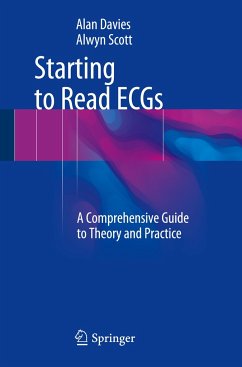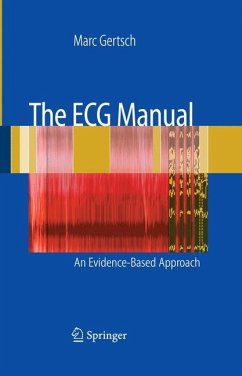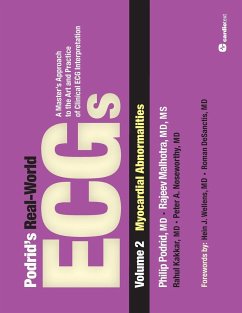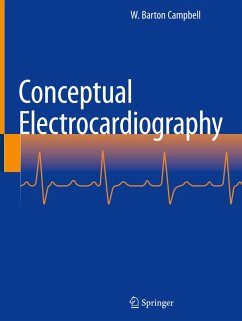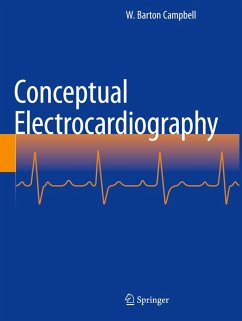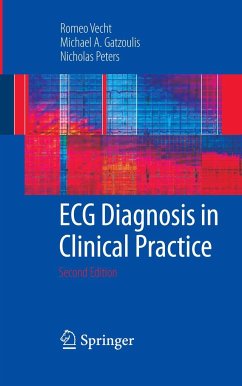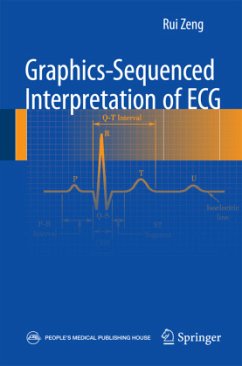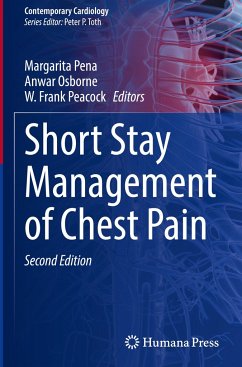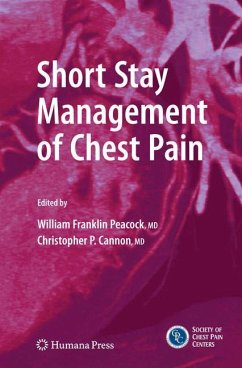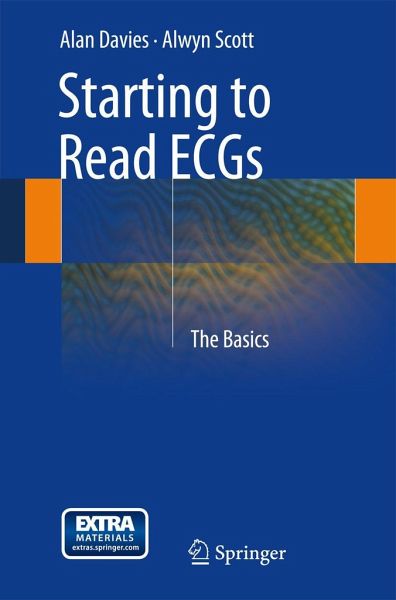
Starting to Read Ecgs
The Basics

PAYBACK Punkte
19 °P sammeln!
This book is book aims to provide the beginner with a concise, practical and systematic guide to interpreting ECGs. It will serve not only as a starter text but also as an immediate bedside reference manual. Starting to Read ECGs: The Basics begins with fundamentals such as how to perform, record and interpret a normal ECG before progressing onto more complex topics, including what effects anatomical abnormalities of the heart, cardiac and non-cardiac conditions can have on the ECG. Each chapter has been supplemented with a multitude of images and diagrams to illustrate points and ease underst...
This book is book aims to provide the beginner with a concise, practical and systematic guide to interpreting ECGs. It will serve not only as a starter text but also as an immediate bedside reference manual. Starting to Read ECGs: The Basics begins with fundamentals such as how to perform, record and interpret a normal ECG before progressing onto more complex topics, including what effects anatomical abnormalities of the heart, cardiac and non-cardiac conditions can have on the ECG. Each chapter has been supplemented with a multitude of images and diagrams to illustrate points and ease understanding, and concludes with both a summary of key points to reinforce knowledge and a quiz for reflective learning.
Starting to Read ECGs: The Basics is an updated version of that previously published by CriticAir and an essential resource for medical students, junior doctors, nurses, paramedics and other health care professionals involved in the recording and interpretation of ECGs who wish to build their knowledge and confidence.
Starting to Read ECGs: The Basics is an updated version of that previously published by CriticAir and an essential resource for medical students, junior doctors, nurses, paramedics and other health care professionals involved in the recording and interpretation of ECGs who wish to build their knowledge and confidence.




